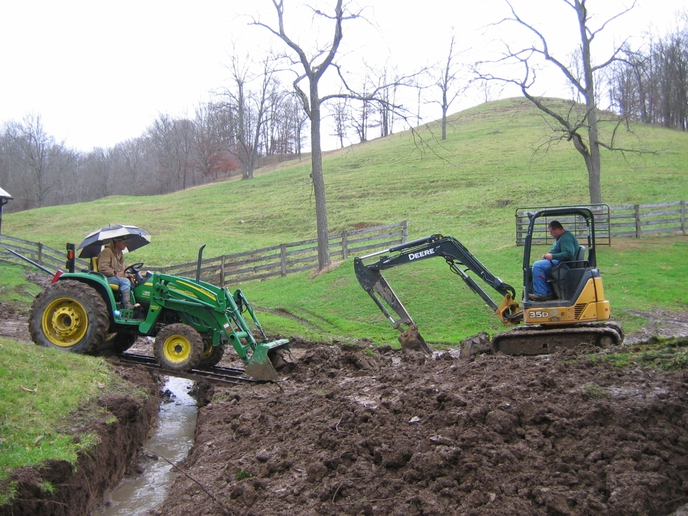Reliable Pad Construction for Your Project Demands
Reliable Pad Construction for Your Project Demands
Blog Article
Culvert Installment Made Easy: Step-by-Step Guide for Success
From picking the appropriate culvert dimension to incorporating appropriate drain steps, each step in the installation process plays a crucial role in the functionality and long life of the culvert system. Keep tuned to discover the crucial actions and factors to consider that can make culvert setup a seamless and effective undertaking.
Picking the Right Culvert Dimension
Choosing the suitable culvert size is critical for making certain effective water flow and architectural stability in culvert installment jobs - Pad Construction. The size of the culvert straight affects the circulation capacity of water through the framework. A culvert that is too tiny can result in flooding and overflow, while one that is too huge might lead to decreased water velocity, potentially creating sediment buildup and obstructions
To establish the appropriate culvert size, factors such as the watershed location, peak flow rates, and hydraulic performance requirement to be carefully thought about. Estimations based on these parameters aid in selecting a dimension that can effectively take care of the expected water quantity while minimizing the danger of clogs and architectural failure.
It is important to get in touch with engineering guidelines and requirements to make sure that the picked culvert size satisfies the task demands and neighborhood laws (Pad Construction). By selecting the ideal culvert dimension, job managers can enhance water circulation, protect against potential problems, and improve the total efficiency and durability of the culvert installment
Preparing the Installment Site
Efficient culvert setup requires careful prep work of the installment website to guarantee ideal architectural assistance and performance. Before starting the installation process, it is essential to remove the site of any type of particles, plant life, or blockages that can impede the culvert's positioning. Ensuring a level structure is essential for the proper positioning and security of the culvert. This might entail rating the site to develop a smooth, even surface that can properly support the weight of the culvert and any expected loads. In addition, appropriate compaction of the soil beneath the culvert is necessary to avoid clearing up or moving in time.
Additionally, it is very important to think about elements such as soil composition, groundwater degrees, and environmental effects when preparing the installment website. Carrying out a detailed site evaluation can aid recognize any kind of possible challenges or risks that may impact the click site culvert's efficiency. By making the effort to prepare the installation site properly, you can assist assure an effective culvert installment that fulfills architectural requirements and guarantees lasting performance.
Positioning the Culvert Properly

The grade at which the culvert is placed is important for maintaining a correct incline for water circulation. Furthermore, the culvert ought to be oriented properly to make certain that the inlet and outlet are in the proper locations. Pad Construction.
Backfilling and Condensing the Dirt
Appropriate backfilling and compaction of the soil around the culvert is crucial to ensure security and avoid our website possible problems in the future. As soon as the culvert is properly positioned, the following essential action is to backfill the area around it with ideal product.
Compaction assists in lowering the chances of negotiation and makes certain consistent support around the culvert. It is important click to portable the dirt evenly on all sides of the culvert to keep its architectural integrity.
Appropriate backfilling and compaction not just give stability to the culvert yet likewise assist in protecting against soil erosion and preserving the long life of the culvert system.
Making Certain Correct Water Drainage Integration
Integrating effective drain services plays an important function in the general performance and durability of culvert setups. Proper drainage assimilation is essential for managing water flow, preventing erosion, and making certain the structural integrity of the culvert system. To achieve this, it is vital to design a comprehensive drainage strategy that takes into consideration variables such as the quantity of water expected, the topography of the area, and the sort of soil present.

In addition, including functions like disintegration control actions, such as riprap or vegetation, can even more improve the performance of the drain system. By carefully intending and executing these drain options, culvert installments can operate successfully and endure the test of time.
Conclusion
To conclude, proper culvert installation is essential for preserving efficient drain systems. By selecting the best culvert size, preparing the installation site, placing the culvert appropriately, backfilling and compacting the soil, and ensuring correct water drainage assimilation, success can be accomplished. Complying with these steps will certainly help guarantee the longevity and effectiveness of the culvert, inevitably adding to the general success of the water drainage system.
Report this page